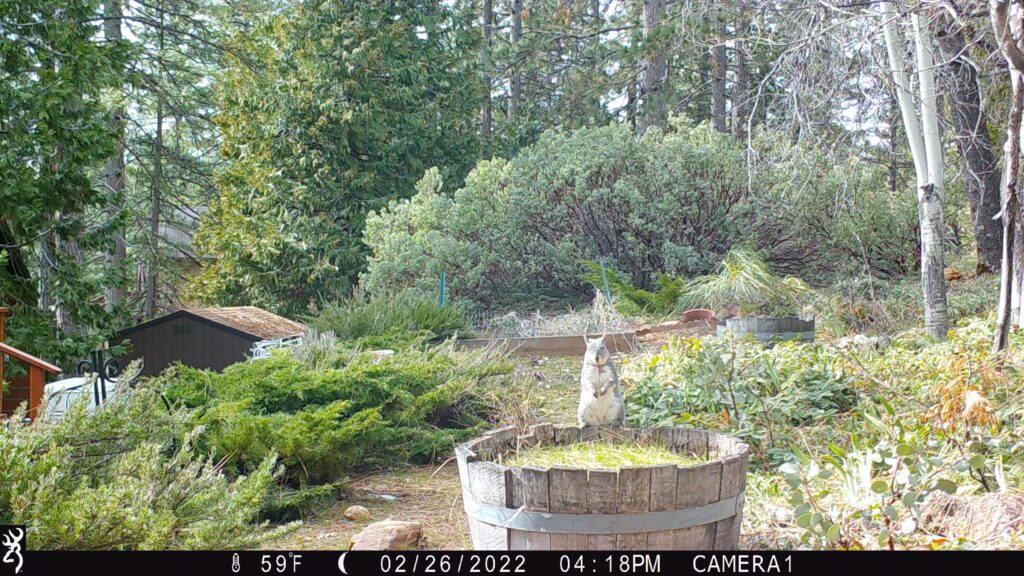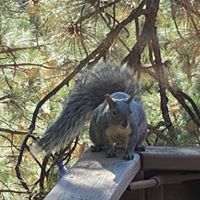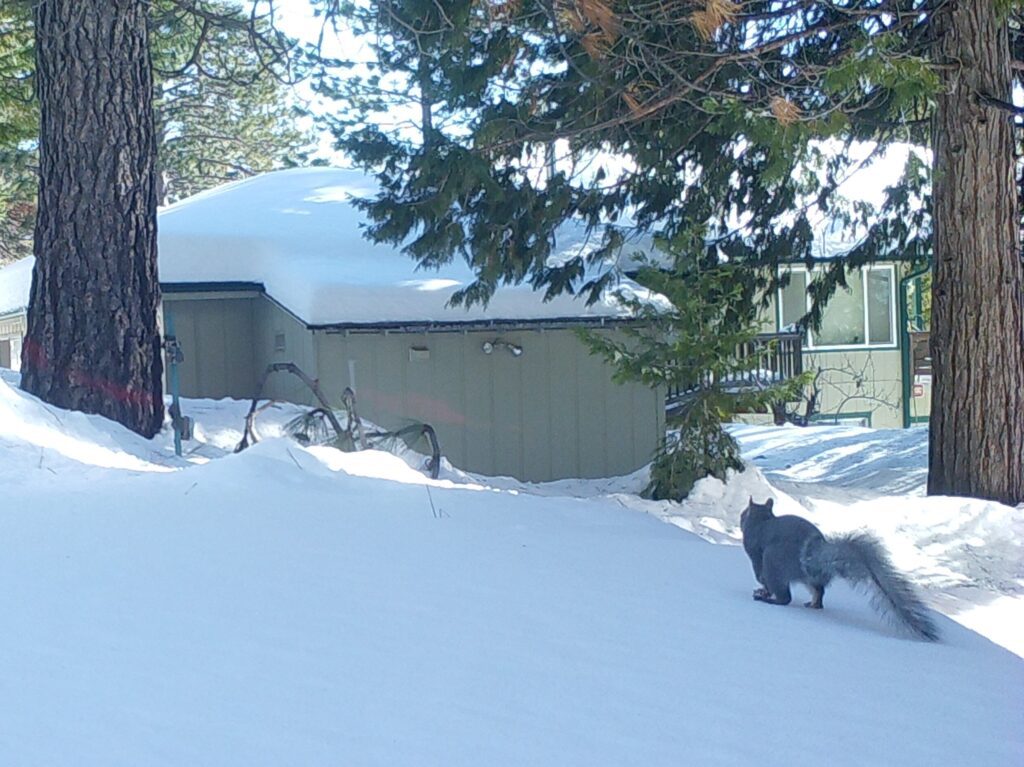Looking through my field camera photos, I found the main image in this blog post, and I began wondering how these little guys survive the freezing winters. How do squirrels prepare for survival during the winter in the Sierras? It is time for me to learn about squirrels.
Squirrels living in the Sierra Nevada Mountains survive cold winter temperatures and low food availability due to their ability to prepare for the season through various strategies. They fatten up during autumn, gathering large amounts of nuts and bark, which they store in caches throughout their habitats. These squirrels also build nests inside trees or underground burrows to hunker down safely when temperatures drop too low. To keep warm during frigid nights, squirrels may bunch together with other squirrels or curl up into tight balls. Some squirrels even enter a state of torpor during freezing winters, reducing their body temperature and metabolic rate until warmer weather returns. By utilizing these adaptive abilities combined with their innate wild instinct for survival, squirrels living in the Sierra Nevada Mountains can make it through winter despite its cold temperatures and limited food supply.


By understanding how squirrels prepare for winter in the Sierras, humans can better appreciate their natural abilities and have more insight into their vital role in maintaining the health of the region’s ecosystems. Additionally, this knowledge can be applied to conservation efforts by helping scientists and wildlife managers better understand squirrel behavior during other seasons. Ultimately, squirrels serve as important indicators of environmental health, and understanding their survival strategies is essential for sustaining healthy populations across the Sierra Nevada Mountains.
If you want to observe squirrels preparing for winter firsthand, your best bet is to visit the Sierra Nevada Mountains during autumn and winter. Then, you can join a squirrel-watching tour to get the most out of your experience! With luck, you may witness squirrels gathering nuts, building nests, or entering torpor as they prepare for the harsh months ahead. Whatever you do, remember that squirrels are wild animals and should be treated with respect and care.


By paying attention to squirrel behavior during colder weather, humans can gain valuable insight into how animals adapt to their environments and better understand how they can help protect squirrel populations across the Sierras. The more we learn about squirrels’ survival strategies, the more prepared we will be to ensure their continued success in this beautiful region of California.
Thank you for reading this blog post, and if you have any questions or comments, please leave them in the Comments section below.
© 2019 I Don’t Know All The Answers, Nikki Mastro
All of my photographs and documents are Copyrighted.


If you could would you make another blog showing summer?
Absolutely!
Hi Millie, I wrote the following blog, A Year in the Life of Squirrels: The Four Seasons of Mischief and Industriousness (https://idontknowalltheanswers.com/a-year-in-the-life-of-squirrels-the-four-seasons-of-mischief-and-industriousness/) for you. I hope you enjoy reading further about the tiny powerhouses, squirrels.